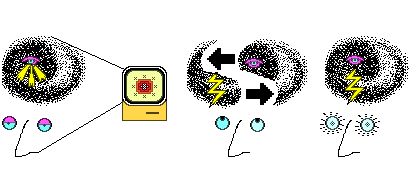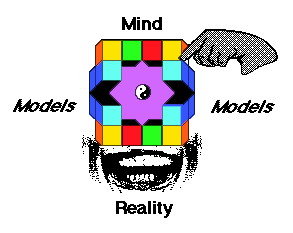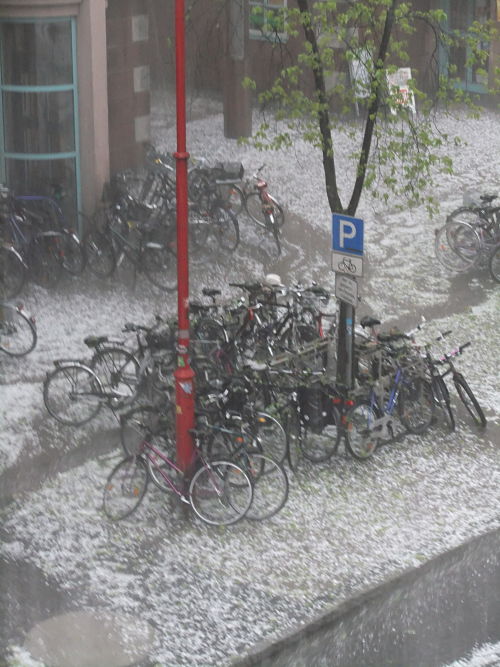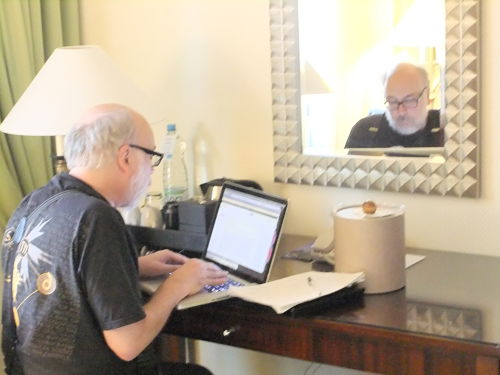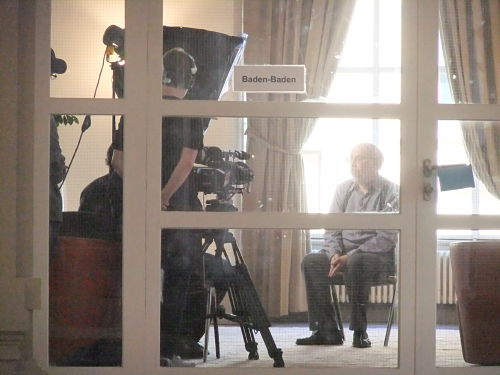Fan Studies at the Crossroads: An Interview with Lynn Zubernis and Katherine Larsen (Part Three)
/Before we continue with our regularly scheduled interview, I wanted to share with my readers this very interesting segment of PBS's Off Book series, which explores many different dimensions of fandom and fan studies, featuring among others, Francesca Coppa and Whitney Phillips.
http://www.youtube.com/watch?v=B9Zum7azNIQ&feature=player_embedded&list=PLC3D565688483CCB5
Now, back to Zubernis and Larsen...
I am struck by the ways you use collages of fan macros and juxtapositions of fan meta to comment throughout the text on your key themes. In a sense, the voices of fans function as a Greek chorus to comment upon and challenge academic claims. What do you see the value of these kinds of insertions of fan voices into your analysis?
Lynn: As we struggled mightily with the aca-fan boundaries in ourselves and our writing, we wanted to find a way to bring fan voices into the book as they were actually expressed, whether posted online or told to us directly, in the hopes of conveying the messages the fans intended to convey. We included fan interviews, in the same way that many fan studies researchers have, with full disclosure that the interviews would be part of an academic text. However, as many have acknowledged, fans who are talking to an interviewer are always speaking to an outsider, and what they say is limited and modified by that knowledge. So we alsosampled from fan meta discussions that had been publicly posted, wanting to bring the fan voices over without interpretation before adding our own analysis. Including fan voices from discussions within the community, even though these were public posts and accessible to outsiders, we hoped would provide a less censored and more genuine expression of fan opinion, thoughts and emotions.
We also felt that much academic analysis had focused on fanfiction – our own included. (The recent issue of TWC on vidding is a delicious exception). Yet fandom is such a visual medium, and so much is conveyed in photos and art and vids, instead of in text. We wanted to incorporate icons and photo/art posts to bring some of that visual language to the printed book. And again, we felt this was a way to bring fan voices into the book in a “pure” form, uncensored and unedited. We had become fascinated with the use of icons as a language all its own, especially in the early days of LJ, when fans changed their icons on a daily basis to comment on fandom current events – and now on Tumblr, as fans comment visually on a minute-by-minute basis to do the same. Our incorporation of this visual language into the book, we hoped, would allow fans to do the same, essentially ‘commenting’ on what we were saying in the text.
You deal explicitly here with the idea that fan practices operate as a kind of therapy. I have to admit to feeling some discomfort with this move, given how much fans pushed back on Camille Bacon-Smith's use of a similar analysis twenty years ago, suggesting that discussing fandom as a site of therapy was necessarily pathologizing to fans, since, minimally, it implied that fans were somehow in special need of therapy. How does your analysis differ from Bacon-Smiths? What has shifted about fandom or about the discourse of therapy which makes a re-engagement with this model productive at the present moment?
Lynn: Several things have shifted, and our hope is that these shifts are reflected in our analysis of fandom as a site of individual change. The first shift is simply the passage of time. We’ve had twenty years since Bacon-Smith’s ethnography of fandom in Enterprising Women, and since Joli Jensen challenged ‘fandom as pathology’. Much has been written since that time in an attempt to carry on Jensen’s defense of fandom as not inherently pathological. I think aca-fans (and perhaps fans as well) are slightly less defensive at this point in time, allowing a more open exploration of the therapeutic elements of fandom – hopefully without engaging a defensive reaction that wants to discount the possibility of anything therapeutic for fear of lumping all of fandom into the ‘needs therapy right the hell now’ category.
The second shift is perspective. The fan studies field has moved toward a more auto-ethnographic approach, and we wanted to continue that movement. One of the reasons it was important to us to write from an insider (or at least a hybrid) position, was to minimize the knee-jerk defensive reaction of both fans and academics to the suggestion that fandom can be therapeutic, at least long enough to consider the possibility. We weren’t standing on the outside looking in, examining a community of fan women under a microscope and trying to figure out what makes ‘them’ tick. (Otherwise, we’d have been standing in line behind Ogi Ogas and company and incurring fandom’s defensive – and quite justified – response). Because of the strong sense of internalized shame around fan practices like slash and hurt/comfort fanfiction, the assumption of negative judgment by outsiders is quickly made.
Bacon-Smith’s account of fandom is consistently even-handed and non-judgmental, but even seemingly insignificant comments can appear otherwise when it’s clear they are made by someone who is an outsider. When Bacon-Smith recounts her discoveries – of fanfiction, of slash, of hurt/comfort – she does so from an explicitly articulated motivation of “curiosity”. Even this can raise the hackles of someone who knows the value of secrecy and the risk inherent in being different. We are rarely curious about something we understand, and just the fact of non-understanding can be threatening, and thus perceived as coming from a position of aggression, or at the very least of unintended threat. In keeping with the ethical position of an ethnographer, Bacon-Smith rightly maintains the outsider position, periodically reminding her subjects that she is not, in fact, one of them. Thus, when she analyzes fans’ motivations, there is at times a subtle “fly under the microscope” dynamic that is created. Bacon-Smith, to her credit, is candid about her own struggle with some types of fannish participation – her emotional reaction to discovering hurt/comfort, for example, is one of extreme discomfort. She remarks at one point that she wanted to close her eyes and cover her ears, so she could shut out the material. She recognized h/c as the “heart of fandom”, but her personal feeling was that she did not want it to be. Her reaction is perfectly understandable to anyone who’s ever been overcome by their own empathy, but because it was an outsider’s reaction, it takes on a tone of judgment: this thing you do is something I don’t want to see or hear or know about. This carries the risk of shaming, which is perceived as a threat to the women who are already feeling ashamed of what they’re motivated to create and express.
Because of this risk, we wanted to make it clear that we were part of the community we were studying, not just as observers, but as participants. We read – and wrote – gen and slash and het and hurt/comfort. We went on fan pilgrimages and attended conventions and stood in line for photo ops and autographs. Our hope was that by sharing our own often-shamed fan practices, we could analyze the therapeutic aspects – as well as all the other aspects – of fandom with less risk of judgment. (And possibly less objectivity, which we saw as a trade-off). Bacon-Smith says she was pushing back against what she perceived as Joanna Russ’ over-valuation and over-estimation of the importance of slash in fandom, and against what she perceived as Jenkins’ under-estimation (at the time) of the importance of slash and sexuality. She consciously attempted to cast a wider net and use a larger sample, trying to show the diversity and variety of fan practices and motivations. We wanted to cast a wider net still, enabled by the way online fandom has expanded fan participation and provided numerous fan spaces -- which are all accessible if you’re already a fan. Like Bacon-Smith, we didn’t attempt to write until we’d been immersed for years, since even from the inside, fandom reveals itself slowly, like the peeling of an onion.
Part of the shift in perspective, and thus the return to a consideration of fandom as therapeutic, is also the greater incorporation of fans’ actual voices in the text. Fans talk openly within their own communities about the therapeutic value of fandom, in a million different idiosyncratic ways. “Fandom saved my life” is a phrase repeated so often that it’s a mantra of sorts; almost every fan can identify some way in which this is true. That does not, however, mean that all – or even most – of those ways are literal. It’s not that fans are more often suicidal, or more often depressed, or lonely, or isolated, or socially awkward, or unattractive, or any of the other stereotypes hurled our way. Some fans are, because some humans are. Some fans have dealt with trauma with a capital “T”, just like many non-fans. Some fans have been impacted by trauma with a small “t” – the seemingly small, relatively ordinary, bad things that befall all of us over the course of all lives, and sometimes have a seemingly out-of-proportion impact on sense of self, identity, mood, etc. Outside of fandom, people work through their “stuff” by talking to a close friend, finding a hobby, seeing a rabbi, taking up a sport, writing in a journal, joining a book club, finding a therapist. They look for a sense of community and acceptance and belongingness; they seek validation, searching for that sense of “I’m okay.” We all do this – we all need this. Within fandom, the motivation is the same. Fans look for acceptance and validation and a sense of belonging, and find it within the fandom community. They work through their “stuff” by sharing their experience with other fans, sometimes in autobiographical posts and sometimes in more displaced form in fanworks. We looked mostly at fanfiction, because that is how we happened to participate in fandom ourselves, but other fan spaces and types of fanworks offer similar means to change. The difference between fans and non-fans is not in the need for therapeutic change, but the means employed to accomplish it.
The third shift is also of perspective. Kathy comes from a background of literary analysis. I come from a psychodynamic theoretical background, which is often the psychological lens used in fan studied, but I was trained as a clinician as well as a researcher, so a wide range of theories colors both -- cognitive behavioral therapy, group dynamics, narrative therapy, positive psychology. My background influences the way I conceptualize ‘therapy’ and what constitutes a ‘therapeutic’ modality – like Seligman, I tend to view therapeutic change as normative, a developmental process that allows all of us to grow and change over time – not as something focused solely on pathology. My work as a therapist also influenced my perspective. Fifteen years of clinical practice working with clients taught me more than grad school about how people hurt and how people change. I saw firsthand the power of reworking life scripts through narrative change and expressive writing, so the parallel process that played out for fans through fanfiction was striking. I’m indebted to the anonymous reviewers from TWC who gave me constructive criticism on an early iteration of these ideas and helped me recognize the glaring omission of hurt/comfort fic in my analysis (which focused mostly on slash).
I hope we made it clear that we recognize that fans write fanfiction and make fanvids and create fanart and do everything else fannish for a thousand different reasons. Many of them have nothing to do with a dictionary definition of therapeutic change and everything to do with having fun and being creative. At the same time, having fun and being creative and expressing oneself is, in the broadest sense, therapeutic. So is belonging to a group, and exploring sexuality, and consolidating identity, and expressing emotions.
Kathy: I'm just going to add to this that I think that we're all in special need of therapy. Don't we all do things that could be characterized as therapeutic? Some people exercise, or throw themselves into work, rescue animals, travel, knit, whatever. We bristle at the idea that fandom is therapeutic only because we spend so much time pathologizing it. Lose that shame and I don't think this suggestion remains that bothersome. I used to spin wool and I found every step in that process enormously therapeutic,from getting the fleece off the sheep to knitting the final product. It was soothing, it connected me back to the land and linked me to (female) traditions, and it was empowering - taking back the means of production and making something that I wanted rather than having to settle for what was available to me in stores (not unlike fan practices, when you get down to it). I don't think anyone in my spinning group would have disagreed if I had said that I found it therapeutic. In all likelihood they would have just said "Of course!"
While my generation of fan scholars sought to downplay conflict within fandom, you devote considerable space here to the consideration of "fan wank." How are you defining "wank"? What role does it play within fandom? And what does a close consideration of this phenomenon contribute to our understanding of fan practices as a whole?
Kathy: Wank, as we're using it, is simply the same kind of contentiousness that occurs in any group. I think the first wave of fan studies needed, for good reasons, to see fandom as a united front, a powerless group seizing power. The "us against them" construction of fandom served a purpose, but it also set up a utopian view of fandom as a safe haven for those othered by mainstream culture - what Sandvoss, Gray, and Harrington characterized as the "fandom is beautiful" phase of fan studies. I think it's important to acknowledge that fandom is not one homogenous whole, otherwise we run the risk of doing to fans the very thing many have gotten into fandom to challenge - the notion that we all consume things in the same way and that we are all comfortable in the one size fits all garment we've been handed by our culture. This was initially a problem for us, the tendency to see fandom as a uniformly happy place - because we were limiting ourselves to certain corners of fandom based on our own interests. We repeatedly overlooked all the other fan spaces that didn't like the things we liked or weren't engaging in the practices we were engaging in. It's easier to overlook the fact that there are people strenuously disagreeing with what you are doing in fandom if you limit yourself to certain Live Journal orTumblr communities. One of the great things about fandom's migration to the internet is that it allows for niche communities, but it also means that as researchers we need to cast a wider net if we want to understand a fandom - including its contentiousness. I became fascinated eventually with Fandom Secrets because it was a space where disagreement was voiced. And since all posts are anonymous, it was also a place where the performance of disagreement highlighted how difficult it is for all of us - both fans and academics - to acknowledge it.
Lynn: When we first encountered the fandom mantra “You can’t stop fandom from wanking,” we were honestly a bit surprised. We were still, at the time, in our fandom honeymoon phase, with the corresponding tendency to view fandom through rose-colored glasses as a place of inclusion and mutual support. The level of fan-on-fan aggression that periodically broke out was striking to us, simply because it seemed to fly in the face of those norms. We felt it was important to include an acknowledgment of fan wank in the book because it is present in all fandoms, and impacts the way the fandom as a whole functions, and how fandom is perceived by those outside the community as well.
Fandom is, by definition, a group. And group theory tells us that whenever humans are in a group (which we are constantly motivated to be, lest we succumb to our evolutionarily ingrained fear of being rejected and thus eaten by a saber tooth tiger), there will be intra-group aggression. Hierarchies develop, as people define themselves and their place through shoring up in-group and attacking out-group behaviors. When shame is added to the mix, it serves as fuel to the fire. Fans are on the lookout for outside criticism, and will censure their own if a fan is perceived as behaving in a way that invites that outside censure. The constant accusations of “You’re doing fandom wrong” are an example of this type of censure, which attempts to shore up the safety of the group by policing fans who are too “extreme” or who do something that attracts outside shaming.
Many of the fan-actor encounters you discuss throughout the book occur at the professionally run Creation Cons. I wouldhave said previous fan scholars have had some bias towards focusing on the activities which occur at fan-run gatherings. What have we missed in not dealing with Creation Cons as a space for fan engagement and participation?
Lynn: Our experience at fan-run conventions and for-profit conventions has been vastly different, with each space offering something unique to fans. The fan-run gatherings have been intimate, in many ways duplicating the feeling of a ‘safe space’ which online fandom offers. Since our experience is limited to Supernatural cons, the fan-run conventions were almost entirely female gatherings, reiterating the online female fan space. Fan-only gatherings allow the same kind of genuine communication that online fandom offers, with the added benefit of face-to-face and physical interaction. We can squee together, commiserate, read badfic out loud and laugh together, or put our plastic Winchester dolls into compromising positions for each other’s amusement and titillation. Fan-run cons are validating, the sense of acceptance and belongingness heady.
For-profit cons are organized to bring fans face-to-face with their fannish objects in the form of actors, writers, musicians, etc. This interaction mirrors the newer forms of online interaction between fans and celebrities on Twitter and Facebook, but with the added intensity of “personal” and physical interaction. This interaction, of course, is not really personal at all, but highly structured and boundaried. Fans, however, find and savor moments of connection, however brief. What surprised us about the for-profit cons is how much of the experience is not about the celebrities – much like the fan-run gatherings, these cons are as much about fans coming together as they are about meeting actors. The celebrity moments are emotionally satisfying but fleeting; the rest of the three-day weekend is spent meeting up with other fans, sharing stories and squee and support.
Kathy: I think a significant part of the equation has been left out by excluding the actors and creators. There still seems to be a strong bias toward looking only at fan behavior among fans, and fan practices as enacted in the enclosed world of fandom, but if we're going to talk about the increasingly intimate relationship between fans and producers, we need to talk to the producers directly.
One of the things that’s missed goes back to the idea of fan shame. You see it enacted at fan conventions where the actors are present - fans policing other fans, voicing their disapproval when certain fan practices are mentioned to actors. The fan fiction questions, for instance, are almost always booed. At one convention we attended someone had posted rules of behavior in the women's room on all the stall doors. Fans want to get close, but they also want that gaze to work in only one direction for the most part. This isn’t something you’ll necessarily see if you’re only looking at fan interactions with other fans – or even fan reaction to fan/producer encounters posted online.
You argue that some early accounts of slash, which were focused on the reconfiguration of male identity, missed the degree to which it also involves the reconfiguration of female identity. In what senses? Explain.
Lynn: Some early theorizing of slash focused on the transgressive potential – the desire of women writers to reconfigure males in a way that would challenge cultural stereotypes of masculinity and allow males to express emotions and experience greater levels of intimacy than the culture allowed (and which women might have wished for in the men in their own lives). These motives probably remain true, but seemed to us to tell only part of the story. Women want men to feel, to emote, to allow intimacy – but women also want to be able to feel themselves, to express their genuine emotions and desires, to achieve the intimacy which only comes from being real with someone. Perhaps, we thought, women were telling and reworking their own stories in slash, displaced enough to allow open expression, and told over two male bodies who were, simply because they were male, freed from certain cultural expectations. Bacon-Smith identified similar motivations twenty years ago, but did not analyze these individual motivations extensively, instead emphasizing the cultural change which might result from women reconfiguring the discourse of power and desire. We wanted to build on what Bacon-Smith said about fanfiction being a displaced way of expressing fans’ real life fear, rage, desire, etc – and about slash providing an additional degree of distance for safe exploration of their own identities and life narratives.
Again, we aren’t saying that all slash is about reconfiguring female identity – or male identity. Sometimes, as has been said so perfectly, it’s merely normal female interest in men bonking.
Kathy: I agree and I would take that further to say that I'm not sure that it does reconfigure female identity so much as it exhibits what was always there. It’s just being publically enacted.
Lynn Zubernis is a clinical psychologist and teaches in the Counselor Education program at West Chester University of Pennsylvania.
Katherine Larsen teaches courses on fame, celebrity and fandom in the University Writing Program at George Washington University. She is the principal editor of the Journal of Fandom Studies.
Dr Zubernis and Dr Larsen are co-editors of the forthcoming Fan Culture: Theory and Practice. They have also published four articles in Supernatural Magazine.



